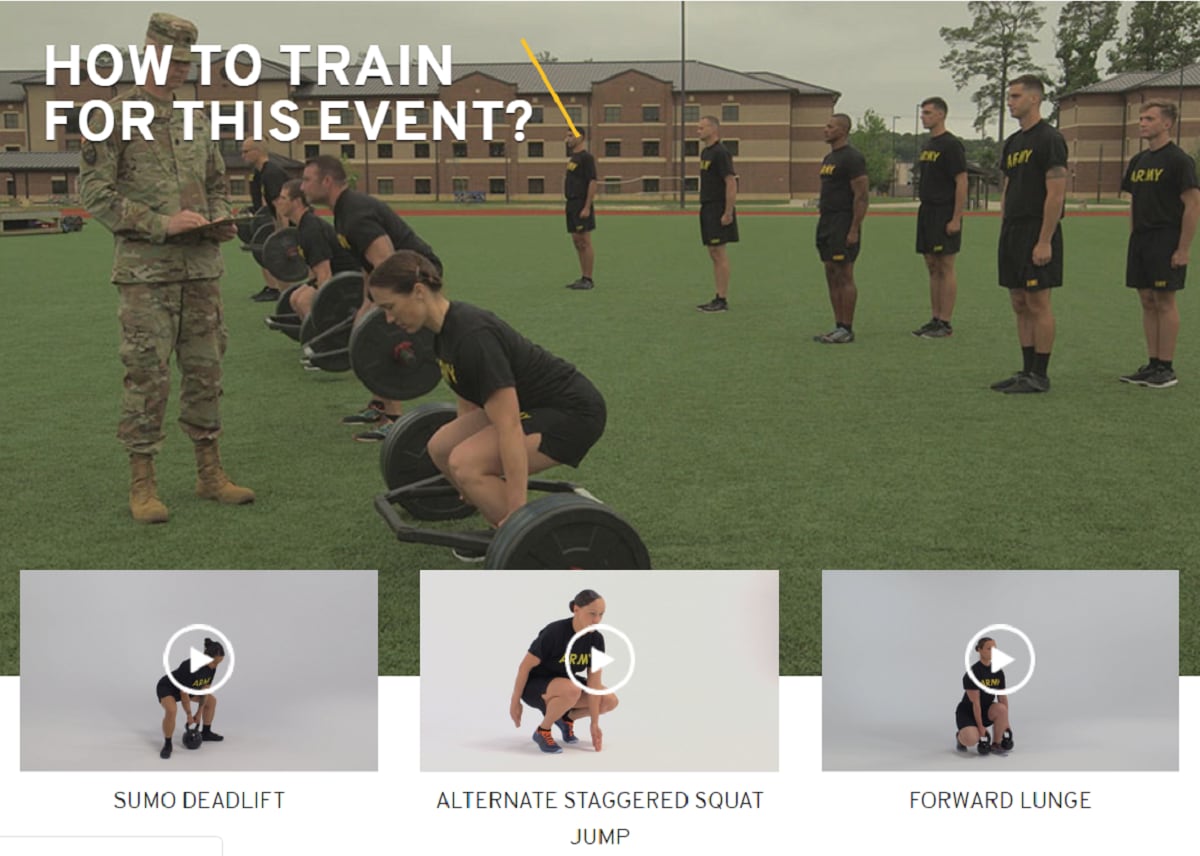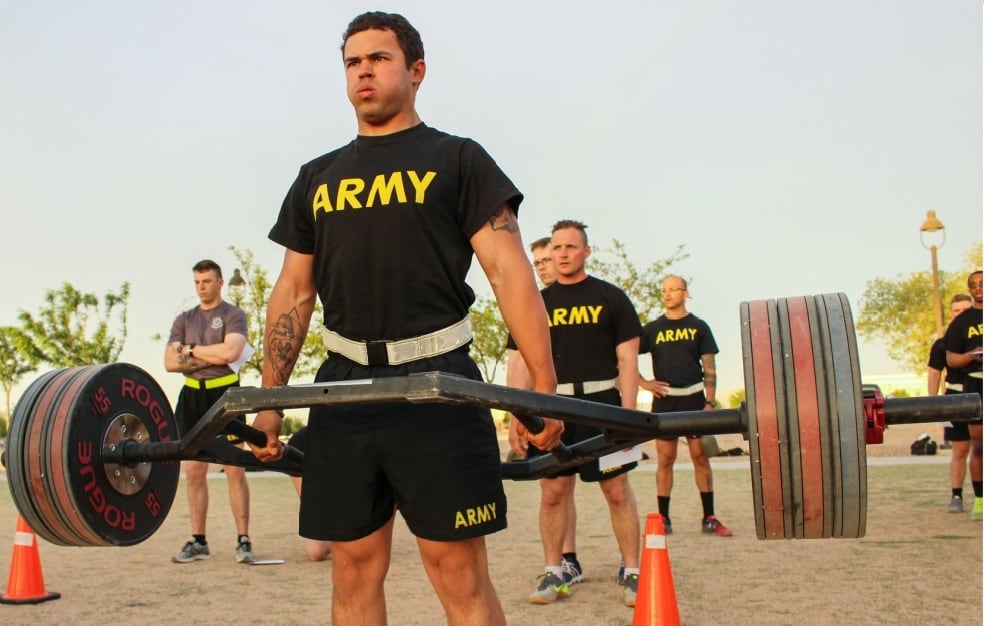HUNTSVILLE, Ala. ― During a panel Tuesday at AUSA’s Global Force Symposium, the top enlisted soldier at Training and Doctrine Command fielded an audience question about whether the difficulty of the Army’s new fitness test could turn American youth off from joining.
His message: It’s tough, but everyone’s going to have to deal with it.
“The feedback that we’re getting is, test scores are OK,” Command Sgt. Maj. Timothy Guden said of the 63-battalion pilot in progress now. “There was, and there probably still is, a lot of weeping and gnashing of teeth and wringing of hands. But I will tell you that as you introduce these new standards, and as you educate folks on the new standards, and train them to those new standards — and this is not surprising, however, a lot of people are surprised about it — we will rise to the challenge.”
The new six-event test measures a lot more than the current Army Physical Fitness Test’s run, push-ups and sit-ups, which only measure cardiovascular and muscular endurance.
To complete deadlifts, leg tucks and a standing power throw, for instance, soldiers will have to work on core and lower-body strength.
While the new standards are still under review, leaders have stressed that maxing out the new test will be much harder than it is now, and the minimum standards to pass ― which will be tied in some way to the physical demands of each Army job ― will be harder to attain than the APFT’s.
“Unfortunately, I think this is kind of the dynamic that’s been built over the past 15 years, but we have a base of soldiers in our Army that — regardless of gender, grade or anything else, time in service — they’re content with meeting the minimal standards,” Guden said. “As long as they pass the standard, they’re OK with meeting the minimal standard.”
“I see it in all different areas and aspects of the Army, not just in this job but in some of my former jobs,” he added. “And that is disheartening.”
RELATED

On the other hand, Army Recruiting Command’s Maj. Gen. Frank Muth added, the ACFT roll-out is having one intended consequence: Units are changing the way they work out ahead of what’s expected to be a 2020 start date.
“What I see already when I go visit the different posts and all the different areas in the Army, they’re starting to do PT differently,” he said.
Core strength, agility and power are all measured in the ACFT, so exercises that build those will have to be a main feature of unit PT programs.
Now, soldiers will not only be training for a fitness test, they’ll be preventing injuries and preparing for combat, too, Muth said.
“Instead of just trying to gear up a month before the PT test, you have to stay in shape all the time,” he said.
At the same time, the Center for Initial Military Training’s Holistic Health and Fitness initiative is pushing for teams of conditioning coaches, physical therapists and nutritionists at every battalion.
Both efforts will change the Army’s fitness culture and dynamic, Guden said.
“I am confident that our soldiers will rise to that challenge and meet that standard,” he added.
Meghann Myers is the Pentagon bureau chief at Military Times. She covers operations, policy, personnel, leadership and other issues affecting service members.
